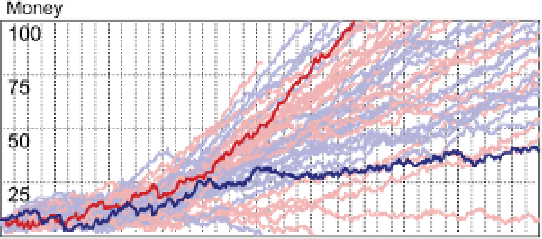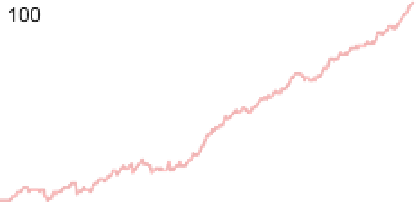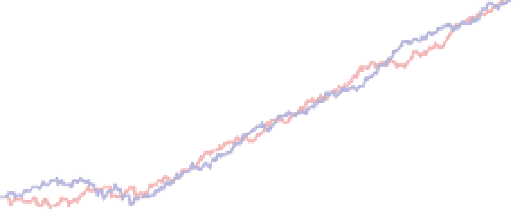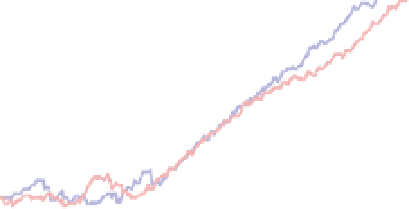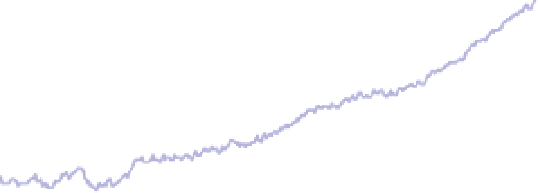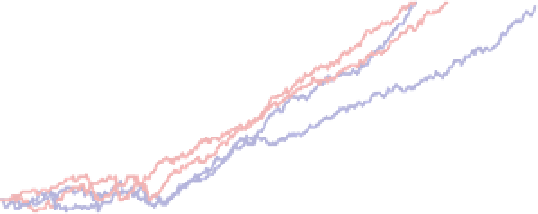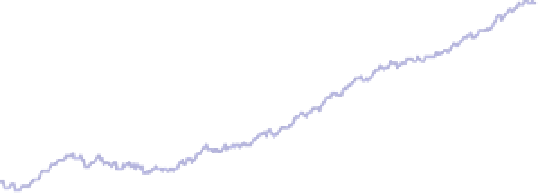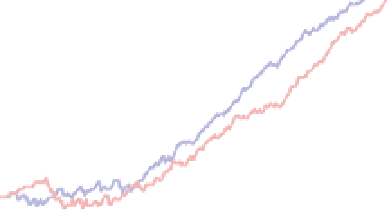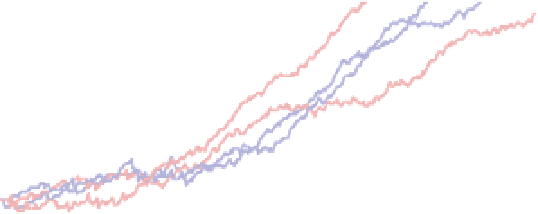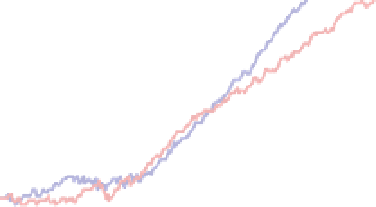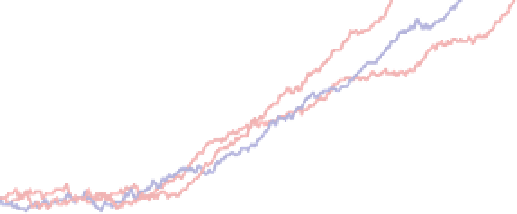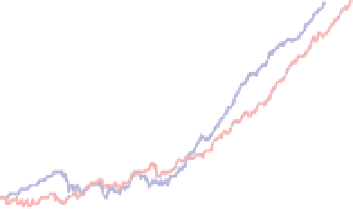Game Development Reference
In-Depth Information
it up so that the minimum amount of money the artificial player keeps in its pool
gradually increases, because as more property is bought by each player, the chances
increase that the player will have to pay more rent on consecutive turns. It needs to
keep a larger and larger reserve as time goes on.
Simulated Play-Test Analysis
Running these identical players against each other and tracking the amount of money
that each player has over multiple sessions produces a chart like the one in
Figure 8.5
.
Reading this chart is not easy, but a few features do stand out. The amount of money
that both players have stays more or less stable for the first 90 steps or so but then
starts to increase gradually.
Figure 8.6
highlights this trend. (We added the
Trend
line for illustration; it was not generated by the Machinations Tool.) As we discussed
in previous chapters, this trend is the result of the positive feedback that is at the
heart of
Monopoly
. More importantly, it is typical of the
dynamic engine
pattern dis-
cussed in Chapter 7, “Design Patterns” (see also Appendix B).
FIGURe 8.5
multiple sessions of
simulated play. The
brighter lines are the
most recent run.
FIGURe 8.6
The trend in the
gameplay
To better study this trend, we can remove all randomness from the diagram. This is
done by changing the production rates, the implementation of the rent mechanism,
and the script of the artificial players.
Figure 8.7
reflects these changes. The new
script for the deterministic artificial players is as follows:
if((steps % 10 < 1) && (Money > 4 + steps * 0.04)) ire(Buy)
